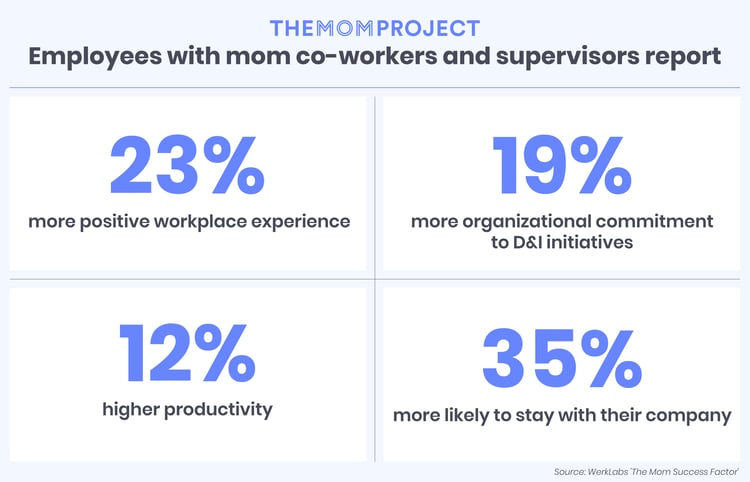You’ve been in your current position for a while, and you’re feeling great about the work you’re producing for the company. Praise is flowing in, metrics are positively trending and you’re becoming invaluable to the team. As your responsibility and value to the company increases, it’s time to ask for a raise. Get paid, ladies!
Did your anxiety level just raise considerably? You’re not alone. In fact, one survey even reports that 61% of women would rather talk about their own death than talk about money!

Speaking up is the first step
When you’re doing a great job, asking for a raise is completely acceptable. Just ask the men: according to some studies they are 4 times more likely to ask for a raise than their female counterparts.
Even if women were to ask for raises as often as men (and there are a few, newer studies that show this has begun happening in recent years), men are still more likely to receive the raise they ask for. A Harvard Business Review study shows that men receive the raise they ask for 20% of the time, while women only receive a raise 15% of the time.
Regardless of whether or not men ask for a raise more often, the fact that they receive them more often is just one more factor that contributes to the gender pay gap women face. On average, white women make approximately 80¢ on the dollar compared to men in the same positions, and moms working full time make an average of just 70¢ on the dollar. This gap is even greater for moms of color who make on average as little as 45¢ on the dollar compared to men.
By asking for a raise, each extra dollar you negotiate helps to close the pay gap, not only for you, but for all of us.
Moms working full time make an average of 70¢ on the dollar compared to fathers. This is a loss of $1,500 per month. This gap is even greater for moms of color who make on average as little as 45¢ on the dollar compared to men.

Confronting the "Motherhood Penalty" head-on
Mothers face inherent biases that they are less reliable (taking a sick day to care for a sick child), less committed (leaving earlier than male counterparts to pick up kids) and less driven (opting out to raise children). While moms face a penalty for parenting, fatherhood is often rewarded as a sign of greater stability and commitment.
This motherhood penalty isn’t evenly applied, either. For women in the highest earning brackets, it’s virtually non-existent. As wages decrease though, the penalty women face increases. Because women of color are already earning less than their white female and male counterparts, this penalty impacts these communities exponentially. In other words, the women who can least afford it are penalized the most.
This penalty also stalls women’s lifetime earnings. Typically, American earners experience the greatest lifetime gain between ages 35 and 44—the same time period when many mothers are taking time off for the birth of their children or to raise them. This additional time off can impact future promotions and landing new, higher paying jobs after a gap.
Even in Denmark, where men and women both receive a full year’s paid leave, mothers experienced a sharp decline in their earnings after the birth of their first child‚ sometimes making as much as 20% less than fathers.
Moms are a major value-add
In a survey of 500+ working professional women by WerkLabs, it was concluded that moms add serious value in the workplace by creating more positive employee experiences, driving greater workplace inclusivity and heightened productivity (shout out to our multitasking mavens!).

What a raise really means
A raise isn’t a compliment or a favor. It’s recognition that you’re now contributing more than you were before. It’s an indication of your overall value to the company. You’ve earned your raise. Now it’s time to ask for it and get it.
Create a value portfolio...
It’s up to you to lead this conversation. The more examples you can share of how you’ve added value to the company, the higher the probability you will receive the raise you’re asking for.
This value portfolio can include:
- Testimonials: Keep a folder in your inbox where you place any emails you receive from clients or partners congratulating you or thanking you for your work.
- Key results: Share a list of all the key work you’ve completed since your last review or increase, and add a note about how this work has directly benefited the company. Data speaks!
- Priority stack and scope: Show how the responsibilities associated with your role have increased in the past months. If you’ve begun managing more team members, be sure to include that as well.
- Certifications: If you’ve attained any additional certifications that are relevant to your role (or the role you’re working toward), be sure to include those here, too.
... and keep it updated
Even if you’re not asking for a raise or promotion, revisit your value portfolio every quarter.
- Review your workload, and trim the tasks that don’t add value to your role.
- Refresh your resume so it’s ready at a moment’s notice.
- Track the contributions and revenue you’ve made for the company, and know your value.
Now that you have all this information ready to share, consider the most effective way to present it to your boss. What is the format of your meeting? If you’re meeting over coffee or lunch outside the office, compile a folder that’s neatly organized. If you’re meeting in a conference room, create a slideshow.
- Use easy-to-read fonts.
- Keep things brief and focus on quantifiable wins such as, “I spearheaded the launch of the new company website which led to a 20% increase in monthly sales, year-over-year.”
- Add simple graphs and charts when possible to visually communicate your growth in your role.
- Use this as an exercise to keep your resume fresh.
Should you ask for a raise, a promotion or both?
Ask for a raise if:
- You’re due for an annual increase
- Your compensation doesn’t reflect industry averages
- You’re consistently exceeding goals and metrics for your role
Ask for a promotion if:
- Your responsibilities have increased significantly
- You’re managing more team members than before
- You’re filling a gap left by a more senior employee who left
When to get both: You should never accept a change in your title and responsibility without being compensated for it, too.
📖 Read more: Advocating for a Promotion
The right time to ask
Your company’s review and raise processes should guide the timing of your request. If your company already has an annual review schedule, you’re less likely to receive a raise if you ask outside of this timeline. Don’t work for free. If your workload or job scope has dramatically increased, you should ask your supervisor if the review timeline can be accelerated in order to review your performance and compensation sooner.
The right time to ask varies widely by company and can also be influenced by unexpected factors like a record quarter that you contributed heavily to (make the ask while the win is fresh!). On the other hand, if the company has just gone through a round of layoffs, it may be better to wait until things are more stable even if you’re due for an annual review. Times like this can be a great time to take on additional responsibilities or begin to support other departments you may ultimately like to work for.
Pick a number
Before you can ask for a raise, you need to determine what amount is reasonable. You may already have an idea of how much you would like to make based on your expenses, but it’s important to consider what’s even possible.
- Research average salaries for your role using sites like LinkedIn and Indeed. It can be helpful to compare this industry average to your company’s average salaries (or companies like yours) using a site like Glassdoor.
- Talk to friends and colleagues about their experiences. Even if they don’t work in the same role or industry as you, they can offer some insight on how and when they successfully asked for a raise.
- Consider things like your company’s annual performance or where it is located (city versus suburb). These things can impact your company’s payroll.
👉 The average raise in the United States is 3%-5%.
Think beyond the paycheck
In addition to negotiating your salary, you can also look at other non-cash benefits as a way of helping you reach your financial goals.
- Benefits: If you’re not already receiving health benefits, are you now eligible? Or, if coverage hasn’t been available for your family previously, can that be added now?
- Flexible work schedules: Sometimes, just having the flexibility to work from a home and pick up your kids earlier from daycare will actually save you money in the long run.
- Equity and vesting: Although equity doesn’t have an immediate impact on your take-home pay, being a shareholder in the company can be beneficial later on. If you’re already a shareholder, can your vesting percentage be increased ahead of the traditional timeline?
- 401(K) and retirement: Can your company increase their retirement matching to help you save more quickly?
- Stipends: Is there a childcare reimbursement that can be made to allow you to wrap up your workday in the office?
- Credits: If you’re using your personal cell phone, vehicle or internet connection at home to perform work activities, can the company reimburse you in full or part for these expenses?
Making the ask
Now that you know how much you’re asking for, it’s time to craft the perfect pitch. Your request should focus on why you’ve earned this increase, not why you need it. Keep the focus on your accomplishments and the value they have added to the company.
Women tend to be better at negotiating for others than they are for themselves. If you’re nervous about bringing up the conversation with your boss, it can help to think about how getting the raise could benefit your family. Could this mean fewer overtime hours? Will you be able to send your kids to college debt-free? Thinking about your loved ones can help you combat the idea that you’re asking for a raise out of self-interest, even though it is perfectly right to advocate for value for just yourself anytime!
Think of this conversation in terms of your career path, not just getting a raise in the short-term. Frame your statements in a way that suggests you are interested in being a part of the company’s future growth.
- Thank your boss for taking the time to meet with you
- Start the conversation on a positive note - how much you love working on the team and what you hope to do in the future
- Explain the purpose of the meeting. Be straightforward: “I’d like to meet with you to discuss a raise and my future at the company"
- Make your case. Using your value portfolio as a guide, walk through the top reasons why you feel this raise is merited at this time
- Propose your raise. Be specific in what you are asking for and in what timeframe
- Open the floor for questions about your contributions and performance
Practice makes perfect
- Review your value portfolio several times until you can present the information seamlessly without reading it word for word
- Write a quick, direct statement with your ask in it: I’m asking for a (5% or $7,500) raise because of the way my role has changed over the past 6 months.
- Run through your request with a friend. If you have a mentor, ask if they would be willing to role play with you. Do you sound confident?
- Record yourself delivering your pitch. This can help you identify any nervous body movements that might undermine your request.
👉 Researchers have found that asking for a precise number (ex: $51,450 vs. $50,000) will help you appear more informed.
The next steps
Your boss most likely won’t be able to give you an answer on the spot without speaking to other decision makers or reviewing your request a bit more. End your meeting by asking when they may be able to let you know something.
Next, follow up with a thank you note (email is fine if that’s your company culture!). Be sure to include an electronic version of your portfolio to make it easy for your manager to share it with other decision makers.
What to do if the answer is “no”
There are several reasons why your boss might not be able to give you a raise at this time.
- If it’s because of the company budget, see if they can budge in another area of non-cash compensation (PTO, paid courses, benefits, etc.)
- If it’s about your performance, ask what would merit a raise, make a plan to address the feedback, and ask to schedule another meeting a few months later to go over your progress.
- Keep your value portfolio up to date. You’ll need it when you discuss your options with your manager next, and if you decide to begin searching for a new job it will be a great resource.
Regardless of how the conversation goes, recognize this negotiation as a valuable learning experience. If you get the raise, use it as motivation to continue working hard to show your boss that they made the right decision. Otherwise, take their feedback to heart and use it to become stronger in your role. You’ll have to go through negotiations like this throughout your career, so it might be a good idea to write down what you learned from this conversation, and use your newfound knowledge to prepare for next time.
Join our professional member network
Navigating work and parenting is a balancing act. Join The Mom Project to access job opportunities, career development resources and connect with a network of professionals that value work and family. 



